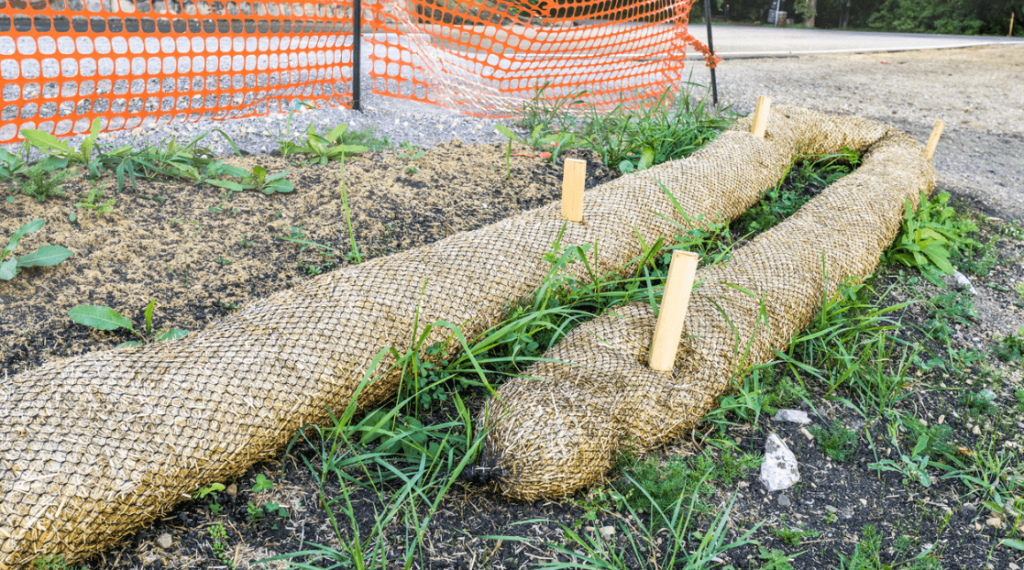
erosion control.png
Erosion Control
Definition:
Erosion control refers to the implementation of strategies and measures aimed at preventing, reducing, or mitigating the process of soil erosion caused by natural forces such as water, wind, and gravity.
Informational/Educational Words:
Erosion prevention, erosion reduction, erosion mitigation, erosion management, soil conservation, erosion control practices, environmental impact.
Fall off the barn roof and busted your keister? Life on the farm or ranch can be tough on the bum. Need a break? Laugh it off at FarmerCowboy.com, the #1 farm humor site. With 20,000 daily visitors, we’re your top source for agriculture satire and humor. Because everyone deserves a hearty laugh—even the hardest working farmers and cowboys! Join us and turn those long days into fun tales at FarmerCowboy.com.
Academic and Helpful Content:
Erosion control is essential for preserving soil resources, protecting water quality, and maintaining ecosystem integrity in agricultural, urban, and natural landscapes. Soil erosion, driven by factors such as rainfall, runoff, wind, and land use practices, can lead to loss of soil fertility, degradation of water resources, and degradation of habitat for wildlife. Implementing erosion control measures and adopting sustainable land management practices are critical for addressing erosion challenges and promoting long-term environmental sustainability.
Erosion Prevention:
Preventing erosion involves implementing proactive measures to minimize soil disturbance, enhance vegetation cover, and improve soil structure to reduce erosion risks. Practices such as conservation tillage, cover cropping, contour plowing, and erosion control structures help stabilize soil surfaces, promote water infiltration, and reduce surface runoff, thus preventing erosion from occurring in the first place. By adopting erosion prevention practices, land managers can preserve soil resources and maintain landscape stability.
Erosion Reduction:
Reducing erosion involves implementing measures to minimize erosion rates and sediment losses from erodible landscapes. Techniques such as terracing, contour bunding, grassed waterways, and riparian buffer strips help slow down water flow, trap sediment, and prevent soil particles from being transported off-site. By reducing erosion rates, land managers can minimize soil loss, protect water quality, and maintain ecosystem function in erosion-prone areas.
Erosion Mitigation:
Mitigating erosion involves implementing measures to address existing erosion problems and restore degraded landscapes. Techniques such as revegetation, soil stabilization, streambank restoration, and erosion control blankets help stabilize eroded areas, promote soil recovery, and prevent further degradation. By mitigating erosion impacts, land managers can rehabilitate degraded landscapes, restore ecosystem services, and improve habitat quality for wildlife.
Erosion Management:
Managing erosion requires adopting an integrated approach that combines erosion prevention, reduction, and mitigation strategies tailored to specific landscape conditions and erosion risks. Integrated erosion management plans typically involve assessing erosion risks, identifying priority areas for action, selecting appropriate erosion control measures, and monitoring implementation outcomes. By managing erosion effectively, land managers can protect soil and water resources, sustain agricultural productivity, and preserve ecosystem health.
Soil Conservation:
Soil conservation is central to erosion control efforts and involves implementing practices and techniques to protect soil resources from erosion, degradation, and loss. Conservation practices such as no-till farming, crop rotation, vegetative buffers, and soil amendments help improve soil health, enhance soil structure, and reduce erosion risks. By promoting soil conservation, land managers can maintain soil fertility, support sustainable agriculture, and safeguard ecosystem resilience.
Environmental Impact:
Erosion control measures have positive environmental impacts by reducing soil erosion rates, protecting water quality, and preserving habitat for wildlife. By preventing sedimentation in water bodies, erosion control measures help maintain aquatic ecosystems, support fisheries, and protect recreational and aesthetic values. Additionally, erosion control measures contribute to climate change mitigation by sequestering carbon in soils, reducing greenhouse gas emissions from land degradation, and enhancing ecosystem carbon storage.
Stakeholder Engagement:
Engaging stakeholders and fostering collaboration among landowners, farmers, government agencies, conservation organizations, and local communities is essential for effective erosion control. By raising awareness about erosion risks, promoting best management practices, and facilitating knowledge sharing and capacity building, stakeholders can work together to address erosion challenges and implement sustainable land management solutions. Engaging stakeholders in erosion control efforts promotes social cohesion, strengthens community resilience, and enhances collective action for environmental conservation.
Research and Innovation:
Continued research and innovation are critical for advancing erosion control practices, developing new technologies, and adapting to changing environmental conditions. Investments in soil science, erosion modeling, remote sensing technologies, and erosion monitoring systems help improve our understanding of erosion processes, identify erosion hotspots, and evaluate the effectiveness of erosion control measures. By supporting interdisciplinary research and knowledge exchange, policymakers, scientists, and practitioners can develop evidence-based solutions to address erosion challenges and promote sustainable land management practices.
In conclusion, erosion control is a multifaceted challenge that requires coordinated efforts from multiple stakeholders to address effectively. By implementing erosion prevention, reduction, and mitigation measures, promoting soil conservation practices, and engaging stakeholders in erosion management efforts, we can protect soil and water resources, maintain ecosystem integrity, and ensure the long-term sustainability of our landscapes.
Originally posted 2017-01-01 12:19:42.
Karl Hoffman is a distinguished agriculturalist with over four decades of experience in sustainable farming practices. He holds a Ph.D. in Agronomy from Cornell University and has made significant contributions as a professor at Iowa State University. Hoffman’s groundbreaking research on integrated pest management and soil health has revolutionized modern agriculture. As a respected farm journalist, his column “Field Notes with Karl Hoffman” and his blog “The Modern Farmer” provide insightful, practical advice to a global audience. Hoffman’s work with the USDA and the United Nations FAO has enhanced food security worldwide. His awards include the USDA’s Distinguished Service Award and the World Food Prize, reflecting his profound impact on agriculture and sustainability.



The vastness of knowledge available on the internet is mind-blowing! ??